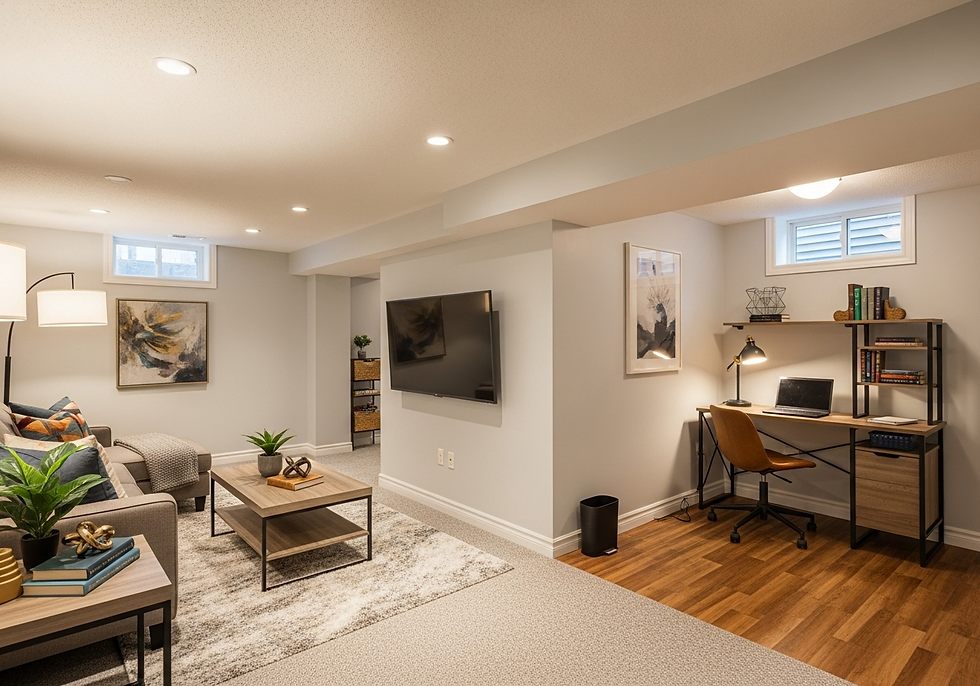Basement Waterproofing is a LIE - Why Your $20k System is Doomed to Fail" basement waterproofing scam
- Dennis Asis

- Sep 29
- 4 min read

Maintaining your home can often feel overwhelming, especially when it comes to battling a wet basement. Water intrusion not only brings the fear of mold but can also lead to structural damage, which may result in repairs costing thousands. Homeowners often invest heavily, believing that a basement waterproofing system is the ultimate solution. Unfortunately, many of these systems can let you down, leaving you in a tough spot. In this post, we will uncover the basement waterproofing dilemma and explain why that costly $15,000 system might not be as effective as it claims to be.

The Allure of Waterproofing Systems
The basement waterproofing industry has boomed, with companies making bold claims to keep your basement dry. The thought of a secure, dry space is hard to resist, especially with the fear of potential water damage looming over homeowners. Many are led to believe that spending a significant amount on a waterproofing system will provide peace of mind and shield their investment.
However, the marketing tactics are often misleading. Companies typically focus on nightmare scenarios of water damage without presenting a balanced view of their systems' effectiveness.
Understanding the Common Types of Waterproofing Systems
Multiple basement waterproofing systems are available, each claiming to solve water intrusion problems. Let's look at a few of the most common:
Interior Drainage Systems:
These systems create a drainage channel around the basement's perimeter to redirect water to a sump pump. They can work, but they often fail to address the actual cause of the water problem.
Exterior Waterproofing:
This method involves digging around the foundation and applying a waterproof membrane. Although it may seem effective, it can be prohibitively costly, often exceeding $20,000, and doesn't guarantee success.

Basement waterproofing system featuring a sump pump and drainage pipes effectively managing water intrusion issues. Sealants and Coatings:
Many companies market sealants to prevent water seepage on walls and floors. However, these products typically degrade, making them a temporary fix at best. Most sealants last an average of three to five years before requiring reapplication.
Sump Pumps:
These devices are common in waterproofing systems and help pump out collected water. However, improper installation or failure becomes a significant risk, leading to issues that could cost homeowners an additional $1,500 or more in repairs.

Basement waterproofing system installed in a corner, highlighting both the structural support and ongoing challenges in addressing persistent water intrusion issues.
Each of these systems has strengths and weaknesses. However, they often fail to achieve a long-lasting solution for the problems causing water intrusion.
The Hidden Costs of Waterproofing Systems
Though the upfront cost of a basement waterproofing system may seem reasonable at first glance, the expenses often don't end there. Homeowners face additional expenses, including:
Maintenance and Repairs:
Many systems require periodic maintenance. Neglecting this upkeep can lead to further damage, translating into additional costs over time.

Poorly maintained gutters and downspouts lead to water pooling around the foundation, highlighting the ongoing costs of inadequate basement waterproofing solutions. Ineffective Solutions:
If the system does not address the root cause of water intrusion, homeowners can find themselves facing the original problem again, necessitating further investment in different solutions.
Insurance Issues:
Some insurance policies may not cover water damage claims if the homeowner did not take appropriate precautionary measures. This situation could leave homeowners with repair bills they never expected.

The Role of Marketing in the Waterproofing Industry. basement waterproofing scam
The marketing strategies employed in the basement waterproofing industry are often designed to create fear among homeowners. Companies use high-pressure sales tactics, emphasizing catastrophic outcomes if immediate action is not taken. This fear can lead to rushed decisions, prompting homeowners to purchase systems that may not be effective in the long term.
Additionally, companies frequently use selective testimonials and exaggerated case studies that do not represent the average customer experience. One positive story does not guarantee success for others. This highlights the importance of doing thorough research before making a decision. basement waterproofing scam
The Importance of Understanding Your Home’s Unique Needs
Every home has unique needs and varying causes of water intrusion. To make a wise investment in a waterproofing system, understanding your specific basement issues is crucial. Here’s a simple approach to consider:
Conduct a Thorough Inspection:
Identify sources of water intrusion, which might include poor drainage, foundation cracks, or outdated window seals. Engaging a professional inspector can help pinpoint exact problems.

Consulting with Professionals:
Seek advice from reputable contractors specializing in basement waterproofing. They can provide insights tailored to your home, ensuring you consider all options.
Considering Alternative Solutions:
Sometimes, basic fixes can be more effective than costly waterproofing systems. Improving drainage or installing gutters could resolve water issues at a fraction of the cost.

A basement contractor discusses waterproofing solutions with a homeowner, while a team works on installing and maintaining gutters to protect the property's foundation from water damage.
The Bottom Line: A Cautionary Tale
Investing in basement waterproofing systems can feel necessary, but it is important to proceed with caution. Many of these systems often fail, leading to disappointment and a hefty bill.
Before making any decisions, take the time to research your options, understand your home's specific needs, and think about the long-term implications of your investment.

Final Thoughts
In conclusion, the basement waterproofing dilemma serves as a warning to homeowners everywhere. The promise of a dry basement may sound appealing, but recognizing the marketing hype is vital. By approaching the process thoughtfully and exploring the best solutions for your unique home, you can better protect your investment and avoid the hidden pitfalls many homeowners encounter.
Remember that informed decisions lead to better outcomes. Your knowledge is a powerful tool in keeping your basement dry and your home safe.
Learn more related topics from our well curated reference. Head over to our Resource Page





Comments